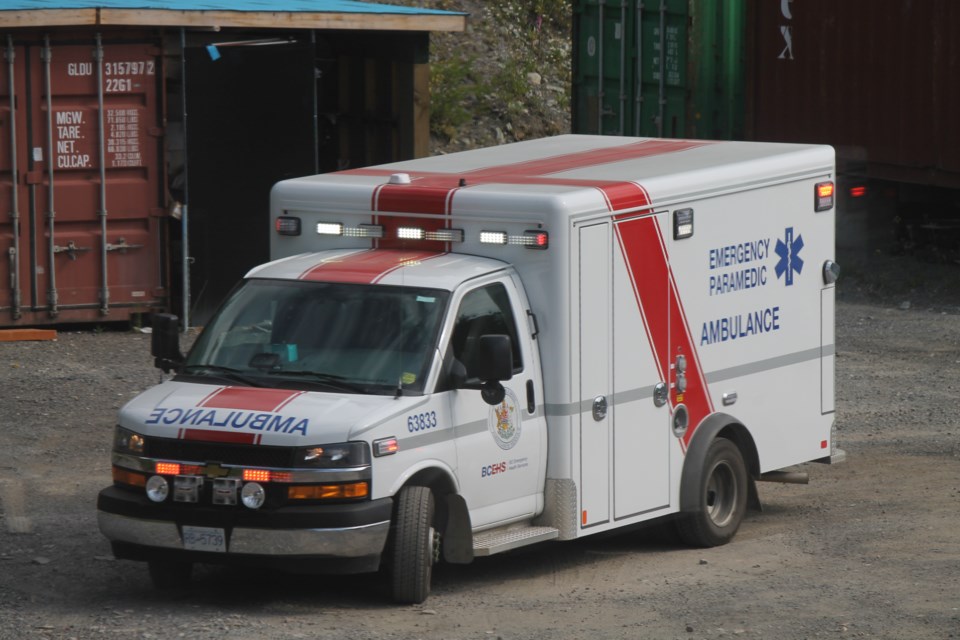New provincial funding bolstering ambulance service in Pemberton is seen as a “significant improvement” from the planned shift to a Scheduled On-Call model—but big challenges remain around staffing, morale and wages, according to the provincial paramedic union.
The Sept. 14 announcement from the provincial Ministry of Health means Pemberton’s ambulance station will now be staffed with eight full-time, fully qualified paramedics on an eight-day rotation—two paramedics working two days and two nights, then having four days off—backed up by part-time, on-call paramedics, said union president Troy Clifford.
“Absolutely it’s a big improvement. It’s conversion of on-call members to full-time, but we’re still having challenges with staffing our ambulances, that secondary ambulance and backfilling, because we’re not getting enough paramedics into the profession,” Clifford said.
“And that’s based on that on-call $2-an-hour model that is still very much in play.”
The changes come after a difficult summer for paramedics in the Sea to Sky, who in July raised the alarm about “dangerous” staffing levels and morale that was described as “completely in the toilet.”
Clifford said the union is continuing to work closely with BC Emergency Health Services’ (BCEHS) new interim chief ambulance officer Leanne Heppell to bolster staffing and improve morale.
“There’s still some real challenges … we didn’t get into this situation overnight, so there’s still some frustrations by paramedics and dispatchers. We’re still seeing out-of-service [ambulances] and shortages to staffing,” he said, adding that mental health and wellness of paramedics is another focus for the union.
“We’re close to having a joint submission to the Ministry of Health [with BCEHS] for recommendations around health and wellness and mental health and psychological support.”
For now, Clifford expressed confidence in the new governance model, even if there are still improvements to be made.
“We can work with them on that, it’s just going to take some time,” he said.
“So is the morale there? No, but I think generally speaking the optimism is that we’re going to get through this, and we need some time, but we need to really make sure that we do everything that we can now to bridge us to get these long-term solutions in place.”
One outstanding issue is the wage structure for rural, on-call paramedics, who get paid just $2/hr when not responding to a call.
“We’ve got to negotiate that away. It’s not sustainable,” Clifford said.
“If you don’t pay and compensate people, you’re not going to have them, especially when they can go to industry and make money, or other professions.”
The other big concern—one that is not unique to paramedics—is general affordability in the Sea to Sky.
“We can add all the positions we want, but if they’re part time in high-expense living places like Whistler … even to get full-time paramedics in there, the cost of living with our wages just is not proportional,” Clifford said.
Mayor Mike Richman welcomed the changes to Pemberton’s ambulance service, expected to come into effect Oct. 29.
“It secures the cars here in Pemberton, it gives us much better levels of staffing security, so it is good news for Pemberton and I was glad to hear it,” Richman said, adding that time will tell what gaps or challenges still need to be addressed.
“This definitely provides the staffing that we were hoping to have. What we want to make sure is that the structure provides the response times that we need around here,” he said.
“So we want to still follow that up, but overall it seems very encouraging.”
Pemberton is just one of two dozen communities in B.C. shifting to a full-time model with the Sept. 14 announcement, which also includes Lillooet.
The announcement also included 85 new paramedic positions and 30 full-time dispatchers in some of the province’s larger call-volume communities.
According to the provincial government, the average spending increase for BCEHS over the past four years has been just under eight per cent annually—from $424.25 million to $559.14 million.



